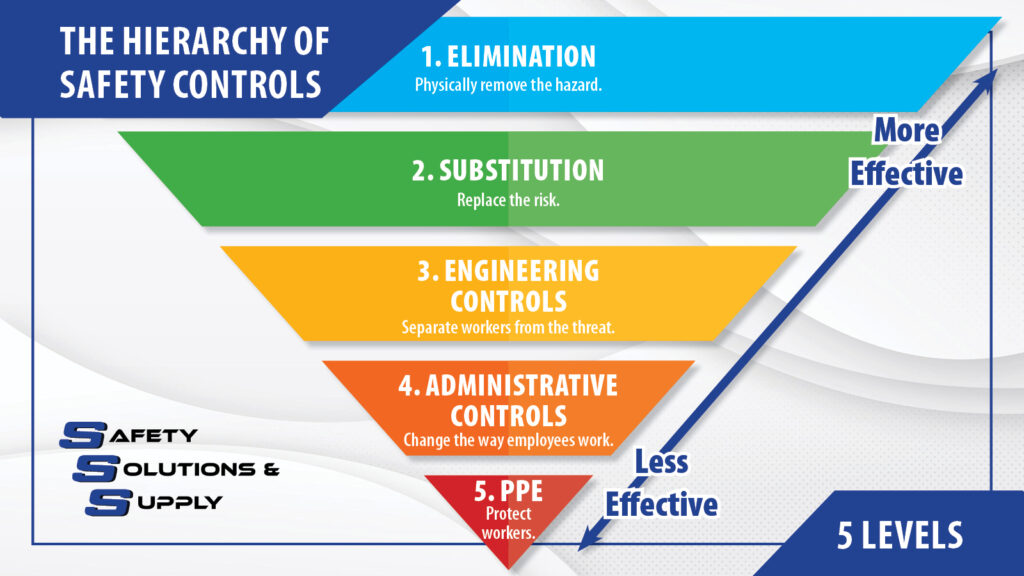Conducting a workplace hazard assessment before a project begins enhances worker safety and complies with federal worker protection standards to avoid costly legal proceedings and fines. As per OSHA’s personal protective equipment standard 29 CFR 1910.132 – General Requirements, “The employer shall assess the workplace to determine if hazards are present, or are likely to be present, which necessitate the use of personal protective equipment (PPE).”
Supervisors must recognize hazards on a job site and communicate them to workers. In turn, workers should report potential dangers to the site manager. It is also essential to review and update your workplace hazard assessment regularly. When any detail of a project changes that could cause a hazard, be sure to continually perform a reassessment to help protect your workers and your operations.
Identifying Potential Workplace Hazards
A workplace hazard assessment identifies and addresses hazards before incidents occur. Potential risks may be physical or health-related. Physical hazards may include moving objects, fluctuating temperatures, high-intensity lighting, rolling or pinching machinery, electrical connections, and sharp edges. Health-related risks may include overexposure to harmful dust, chemicals, radiation, or hazardous noise. Five steps to take when performing comprehensive hazard assessments include:
- Inspect and identify the hazards by breaking job tasks into successive steps and then determining the risks of each.
- Decide on which threats might harm employees and how.
- Evaluate the risks and decide on effective control measures.
- Record your findings and implement routine control measures to eliminate them.
- Review your update your assessment as necessary.
The hazard assessment required by OSHA should be certified written documentation identifying the workplace evaluated and the name and date of the person conducting the evaluation. In addition, any information about the hazards associated with the job, the work procedures involved, any special precautions or controls, and personal protective equipment requirements should be communicated and implemented to all employees working at that job site by their site supervisor.
Preventing Workplace Hazards: The Hierarchy of Safety Controls
The hierarchy of safety controls is a systematic approach to managing safety on your job site by providing a system to select the most effective control measures to eliminate or reduce the risk. The hierarchy includes five levels of control measures, with the most effective action at the top and the least effective being at the bottom:
- Elimination – Physically remove the hazard.
- Substitution – Replace the risk.
- Engineering Controls – Separate workers from the threat.
- Administration Controls – Change the way employees work.
- Personal Protective Equipment (PPE) – Protect workers with PPE.
The best way to improve safety in your workplace is to eliminate the hazard. If you cannot remove the danger entirely, try substituting it with a safer option. Other less effective options would be implementing an engineering control such as a system that helps you isolate yourself from the danger or administrative controls such as warning labels, updating company policies, and implementing training programs. It is best to avoid adopting rules that may introduce new hazards.
PPE is considered the last resort in the hierarchy of safety controls. Even though it’s at the bottom of the list, it still plays a vital role in safety. If a hazard still presents itself, OSHA requires employers to provide workers with the PPE necessary for their specific job hazard and that employees receive proper training on using and maintaining the PPE.
Conclusion
Asking the right questions and considering possible outcomes during every hazard assessment strengthens compliance and reduces risk, eliminating many accident-causing hazards. Thorough inspections will be specific, including descriptions of how hazards will be controlled, and will evaluate each task and each threat individually.
Using the findings from a Workplace Hazard Assessment is a morale booster for the entire company because they help to improve communication between management and experienced employees. But, equally important, they help to integrate best safety practices into a particular task or job operation.
Safety Solutions and Supply offers contract safety personnel for specific project management and embedded consulting on a case-by-case basis. The flexible scheduling of our services allows our clients to have our qualified safety professionals readily available and supported by our established safety consulting company. Call 866-537-2262 today to learn more.

